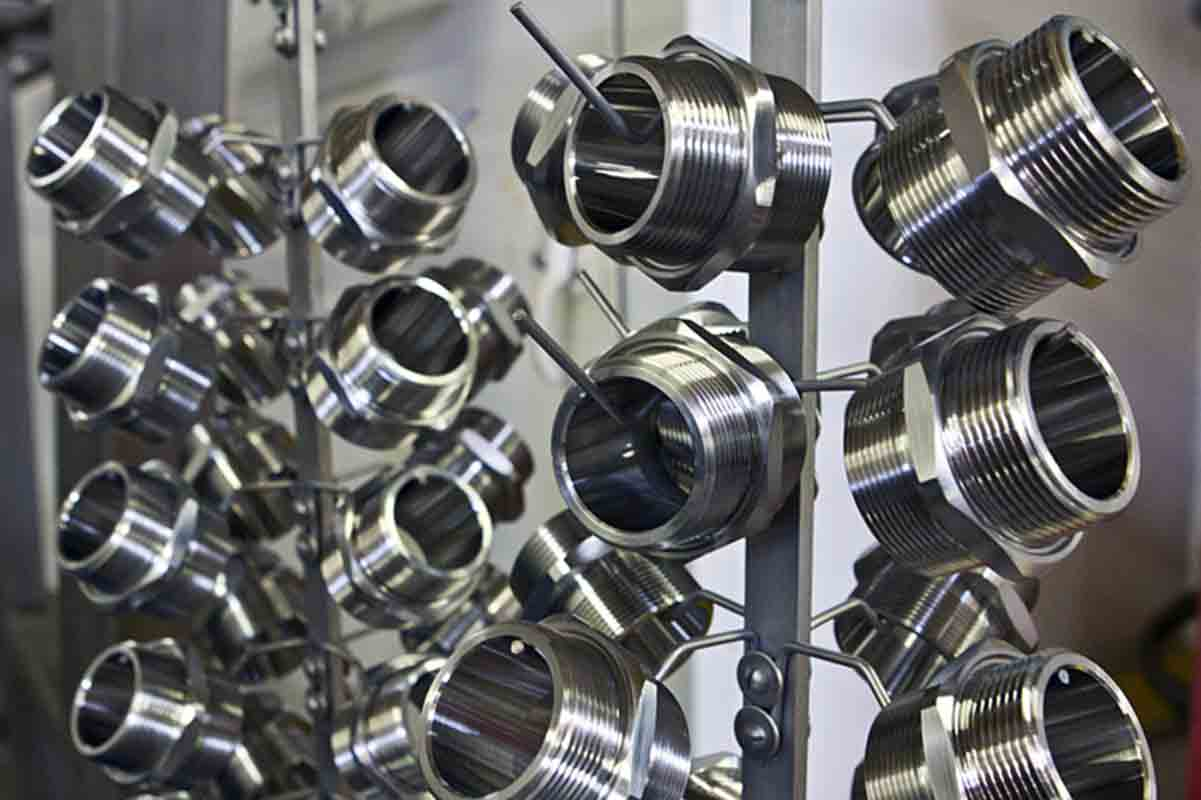Trivalent Chromium Finishing: An Environmentally Friendly Alternative to Hexavalent Chromium Plating

Trivalent chromium finishing provides corrosion resistance and aesthetically pleasing bright and colorful finishes while being more environmentally sustainable compared to traditional hexavalent chromium plating. It has emerged as a safer alternative for metal finishing operations seeking to eliminate the use of the toxic hexavalent chromium.
What is Trivalent Chromium Finishing?
Trivalent Chromium Finishing (TCF) refers to plating and other surface finishing processes that utilize trivalent chromium in lieu of hexavalent chromium. Trivalent chromium, also known as chromium III, is the naturally occurring and stable form of chromium. It is less toxic and carcinogenic than hexavalent chromium (chromium VI), the form used in traditional chrome plating.
In TCF processes, trivalent chromium is deposited onto metal substrates from an electrolytic solution composed primarily of trivalent chromium ions and other compounds. By controlling variables like current density, bath temperature, and chromium concentration, electroplating techniques produce chromium coatings with properties comparable to hexavalent chromium in terms of corrosion resistance, hardness, and appearance.
Advantages over Hexavalent Chromium Plating
The main advantage of trivalent chromium finishing is that it eliminates the health and safety issues associated with hexavalent chromium while providing similar functional coatings. Some key benefits over traditional chrome plating include:
Low Toxicity: Trivalent chromium poses much less risk to human and environmental health. It is not a known carcinogen and does not generate hazardous byproducts like hexavalent chromium mists and dusts.
Regulatory Compliance: TCF allows shops to comply with increasingly stringent regulations restricting the use of hexavalent chromium in many jurisdictions and industries like aerospace. It has earned the approval of organizations like NSF International.
Sustainable Alternative: Trivalent chromium finishing provides a long-term substitute for hexavalent chromium plating and contributes to more environmentally sustainable manufacturing operations.
Performance Comparable to Hexavalent Chromium: Properly applied TCF coatings exhibit corrosion resistance, hardness, and aesthetic qualities on par with conventional chrome while avoiding toxicity issues.
Applications and Industries Using Trivalent Chromium Finishing
With demonstrated performance and safety advantages, trivalent chromium finishing has gained widespread acceptance as a hexavalent chromium alternative across many applications and market sectors:
Automotive: TCF allows original equipment manufacturers and parts suppliers in the auto industry to chrome plate components like brake calipers, springs, and fasteners.
Decorative Plating: Architectural, lighting, and plumbing fixtures commonly undergo trivalent chromium plating for aesthetics and corrosion protection.
Aerospace: Leading aerospace OEMs and suppliers have transitioned from hexavalent chromium coatings to TCF for aircraft structures and engine parts.
Appliances: Home appliance producers plate appliances like washing machines, dishwashers and refrigerators with TCF for durability and attractive finished looks.
Hardware: Builders’ hardware, locks, handles, and other fastening devices often receive trivalent chromium platings recognized by agencies like the California Air Resources Board.
Firearms: Gun manufacturers use trivalent chromium platings on firearm components such as trigger guards, slides, barrels and other parts.
Process Considerations for Trivalent Chromium Finishing
While the operating principles of trivalent chromium plating are comparable to hexavalent chromium, some aspects of process implementation differ to optimize coating performance and qualities. Key factors platers evaluate include:
Bath Composition: Electrolyte makeup requires precise amounts of trivalent chromium salts, pH buffers, brighteners and other additives to produce high-quality deposits.
Current Density: Higher current densities are generally needed versus hexavalent baths, anywhere from 10-50 A/ft2 depending on substrate material.
Temperature Control: Maintaining the bath within an optimal temperature range, usually 50-60°C (122-140°F), is important for plating rate and finish properties.
Racking Methods: Part configurations and movement through the lines may require adjustments relative to hexavalent systems.
Post-Plate Treatments: Sealing and passivation steps help enhance appearance and corrosion protection of as-plated TCF coatings.
Quality Assurance: Testing methods evaluate coating thickness, microhardness, and adhesion to verify specification compliance.
Final Considerations
As environmental and safety regulations continue restricting hexavalent chromium usage, trivalent chromium finishing will further assume prominence as a sustainable replacement across diverse manufacturing industries. With proper process setup and controls, TCF delivers chromium alloy coatings meeting application requirements while eliminating hazards connected to chrome VI. Careful study of electrolyte chemistries, operating parameters and quality control also ensures trivalent plating systems realize optimum performance as a long-term hexavalent chromium alternative.
Get More Insights On Trivalent Chromium Finishing
- Art
- Causes
- Crafts
- Dance
- Drinks
- Film
- Fitness
- Food
- الألعاب
- Gardening
- Health
- الرئيسية
- Literature
- Music
- Networking
- أخرى
- Party
- Religion
- Shopping
- Sports
- Theater
- Wellness
- IT, Cloud, Software and Technology


